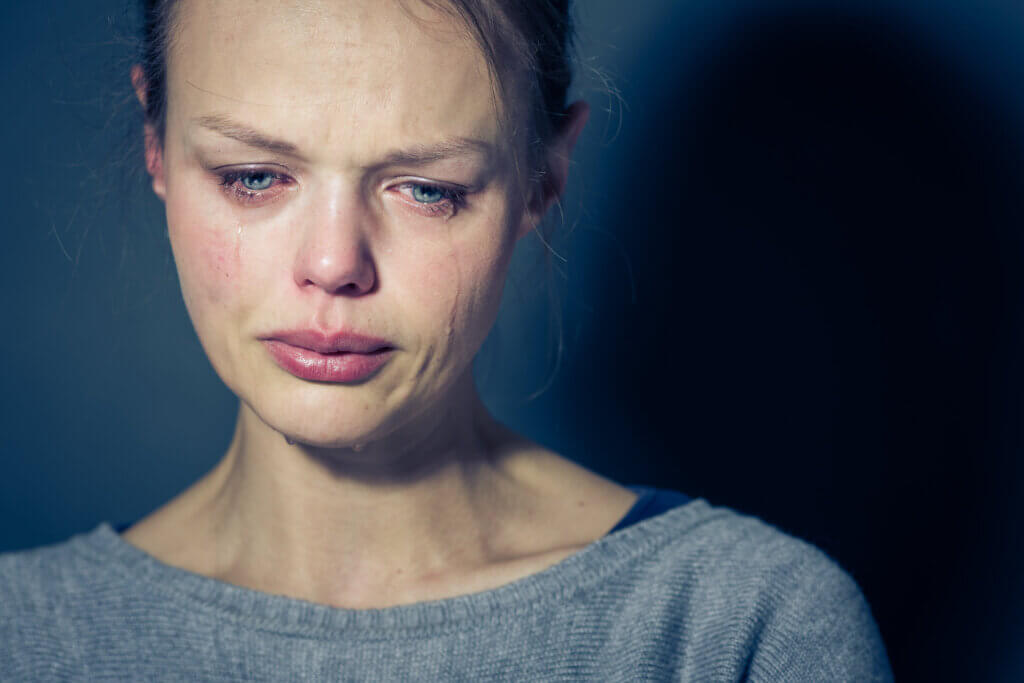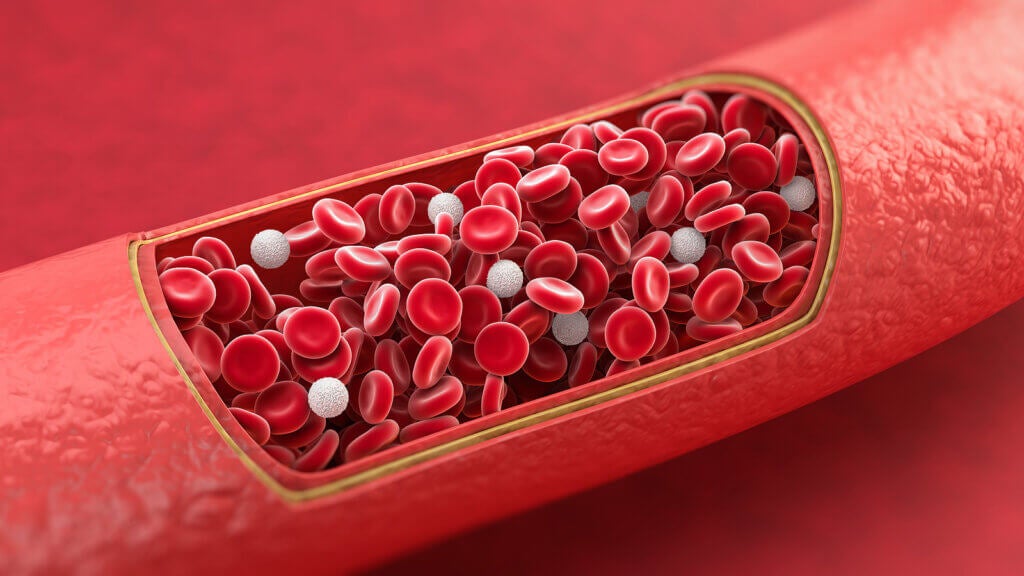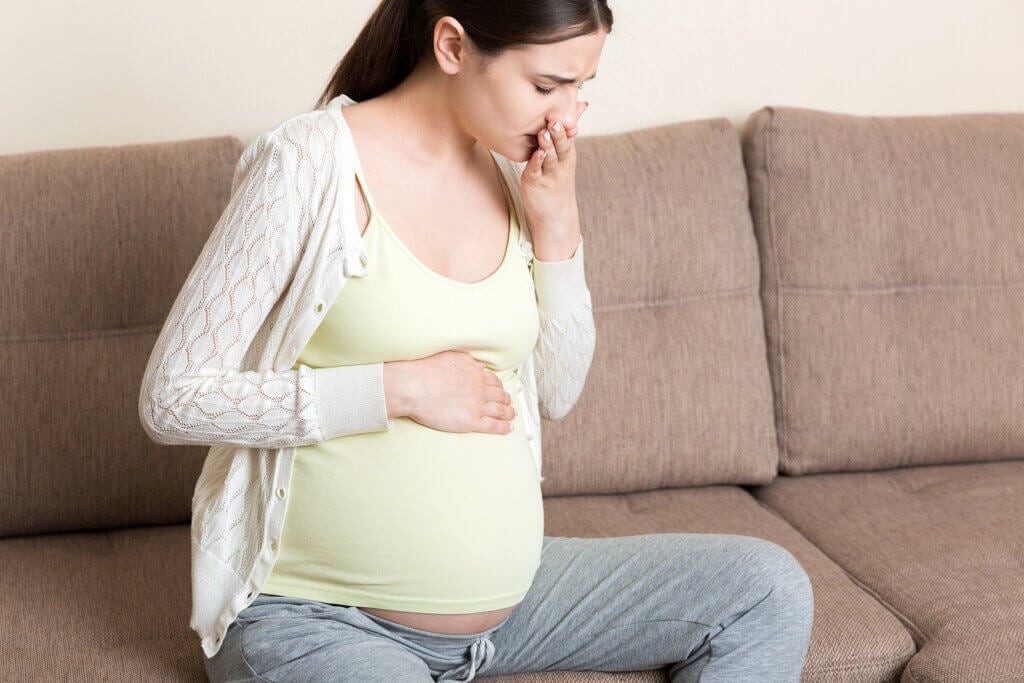The Differences Between Sadness and Depression


Escrito y verificado por el biólogo Samuel Antonio Sánchez Amador
We all experience sad times in our lives. Negative emotions are just as important as positive ones, as they also help us learn, grow, and develop as individual entities and express one of the characteristics that make us human. However, chronic sadness accompanied by other symptoms isn’t normal. Do you know the differences between sadness and depression?
Distinguishing between a natural trait and an illness is a very complex task, but it’s always better to be suspicious of the latter to rule out possible disorders. Keep reading if you’re interested in the subject, as we’ll dissect the differences between emotion and illness in the following article. Don’t miss it.
Depression and other emotional disorders
First of all, we believe it’s necessary to emphasize the importance of mental disorders in modern society. No matter how much progress has been made on this front, there are people who still don’t conceive of mental and neurological imbalances as diseases, but the numbers and the professionals differ.
The Confederation of Spanish Mental Health and the World Health Organization (WHO) provide us with the following figures of interest in order to contextualize mental disorders at a social level:
- Mental health problems are estimated to be the leading cause of disability in 2030.
- One in 4 people will have a mental disorder in their lifetime. Between 35% and 50% of patients don’t receive any type of treatment to solve it, or this treatment isn’t adequate.
- 12.5% of all illnesses fall into the category of mental disorders. This figure is higher than that for cardiovascular problems (the leading cause of death in the world) and cancer.
- 450 million people are affected by mental disorders, which make it difficult to perform tasks and care for their individual survival.
- Depression is the king of mental disorders, affecting 268 million people in the world and causing a high burden of disability.
- 50% of mental disorders appear before the age of 14, and 75% before the age of 18. Suicide is the second leading cause of death in people between 15 and 29 years of age.
As you can see, mental disorders are no laughing matter. This preface is essential to emphasize that, as informative as this space is, you should seek immediate professional help if you suspect that you have depression or any other type of psychiatric condition. When it comes to your health, prevention is always the best medicine.
The seven differences between sadness and depression
As we’ve said in the above paragraphs, feeling sad is normal. However, when it becomes the dominant emotion in your life, it may indicate a mental illness. We’ll break down the differences between sadness and depression in the following sections.
1. Depression is pathological, but sadness isn’t
The Cambridge Dictionary defines sadness as “the feeling of being unhappy, especially because something bad has happened.” On a psychological level, this is one of the six basic emotions postulated by Paul Ekman, along with joy, anger, surprise, fear, and disgust.
Sadness is a natural emotional pain that’s associated with (or characterized by) feelings of disadvantage, loss, hopelessness, grief, helplessness, disappointment, and mourning. Crying is an involuntary mechanism to some extent and is linked to this emotion, but not all sad people cry, and not all crying has negative connotations.
The definition of depression is very different. The dictionary of the American Psychiatric Association specifies it as “a negative affective state, which ranges from unhappiness and discontent to an extreme feeling of sadness, pessimism, and discouragement that interferes with daily life.” More importantly, it’s classified as a mental and behavioral disorder.
Therefore, the first of the differences between sadness and depression has already been made clear: Being sad isn’t pathological, while depression is included in the category of emotional disorders. The first doesn’t necessarily require professional attention (although psychologists can help manage it), while the second always has the need for medical attention.
Depression is a disorder, while sadness is a natural basic emotion.
2. Depression has its own diagnostic criteria

Sadness isn’t “diagnosed” as such because in order for there to be a diagnosis, there must be a disease to begin with. On the other hand, depression does have a series of criteria that indicate its existence in the patient.
The American Psychiatric Association publishes its Diagnostic and Statistical Manual of Mental Disorders from time to time, updating the diagnostic criteria for all old and new mental disorders. In the fifth edition (published in 2013), the following bases are established with regard to depression:
- Feeling depressed and chronically sad for most of the day, all (or most) of days.
- A marked decrease in the feeling of enjoyment and pleasure (anhedonia). People with depression have a hard time enjoying activities that were previously stimulating to them all or most of the day.
- Significant weight loss without dieting, weight gain, or loss/gain of appetite on a fluctuating basis.
- A reduction in the speed of thought and performance of physical movements. This sign must be observable by other people, not just self-perceived by the patient.
- Fatigue and loss of energy (almost) every day.
- Feelings of worthlessness or excessive guilt every or almost every day.
- Loss of concentration and indecision every day or almost every day.
- Recurring feelings of death, suicidal thoughts without specific plans, suicide attempts, or a plan to attempt suicide.
For a patient to be diagnosed with depression, they must meet some of the symptoms for a period of two weeks or more in a row. Also, one of the symptoms has to be chronic sadness (point 1) or anhedonia (point 2). Finally, it should be noted that the clinical signs must cause the person significant clinical discomfort or associated difficulties.
The difficulties caused by the depressive picture can appear in the emotional, work, social realms as well as many others.
3. One is a symptom of the other
You may have realized it by reading the previous lines, but one of the key differences between sadness and depression is that the chronic sadness itself, established for two weeks or more, is a clear symptom of depression. In other words, the emotion of being constantly sad can lead to a depressive picture.
For the diagnosis of depression to be accurate, the patient must have chronic sadness, lack of pleasure (anhedonia), or both. Also, this has to interfere with their routine and cause certain clinically significant signs. For example, a depressed person also often has trouble sleeping, loss of energy, chronic anxiety, and other concomitant psychological agents.
Depression requires chronic sadness, anhedonia, or both to be diagnosed. The rest of the symptoms are accessory, but only these two determine it.
4. Depression and sadness are different processes from the biochemical point of view
Defining the causality of emotions and disorders at a psychological level is very complex, as the human being is made up of thousands of interconnected systems (and more if we talk about the brain). However, the physiological bases of sadness and depression have been explored, and there are certain variations between them.
According to scientific studies, sadness has been associated with increased bilateral activity in the vicinity of the medial and posterior temporal cortex, the lateral cerebellum, the cerebellar vermis, the midbrain, the putamen, and the caudate. At the biochemical level, in simple terms, it can be associated with an immediate low level of serotonin.
On the other hand, the pathophysiology of depressive disorder hasn’t yet been elucidated as effectively. Current evidence points to a complex interaction between the availability of neurotransmitters and the regulation and sensitivity of the underlying receptor to affective symptoms, as indicated by the Statpearls medical portal.
Despite the distances, depression has also been linked to an imbalance in the serotonin circuitry of the central nervous system. However, other new neurotransmitters come into play here, such as norepinephrine, dopamine, glutamate, and brain-derived neurotrophic factor (BDNF). Therefore, selective serotonin reuptake inhibitors (SSRIs) are useful in treating it.
Depression appears to be a multifactorial and very complex disorder, while sadness is explained more “simply” (it’s one of the six basic emotions).
5. Depression doesn’t have to have an exact cause
On an emotional level, sadness can be defined as “a reaction to a loss or adverse situation by which we’re overcome.” It usually has a specific cause, such as the loss of a person, an object, or a valuable objective and the experience of an adverse situation. Either way, a certain causality is established (“I’m sad for this reason”).
Depression doesn’t have to have a specific cause, as there are people who have many skills and resources and haven’t experienced traumatic events and suffer from this clinical picture with no apparent explanation. In any case, there seem to be certain predisposing factors, among which are the following:
- Life events: Sexual, mental, or physical abuse during childhood is associated with a higher probability of developing depression in adulthood. Social isolation, stress, adversity (lack of money and illness, for example), family rejection, and many other factors also promote it.
- Personality: For example, neurotic people are more prone to depressive disorders throughout their lives.
- Alcoholism: Alcoholism can precede depression or be one of its triggers.
- Non-psychiatric illnesses: Malnutrition and hormonal disorders (among many others) can promote depression, although they don’t explain it on their own.
In summary, another clear difference between sadness and depression lies in causality. When you’re sad, there’s almost always a why, but in depressive conditions, the trigger is multifactorial, diffuse, and can go back a long time.
6. The duration of sadness is shorter, while depression is chronic

The duration and intensity of the feeling of sadness is variable and depends on personality patterns, cognitive schemes, and the sociocultural environment. Not all of us react in the same way to a negative stimulus, which is why it’s difficult to establish how long it’s “normal” to be sad after a certain event.
In any case, it’s established as a general criterion that sadness is more ephemeral and that it’s possible to “abstract from it” (snap out of it), while depression dominates most of the patient’s day and disables them from carrying out certain activities. As we’ve said, depression is suspected when sadness is chronic and apparent for a period of 2 weeks or more.
Depression is chronic, while sadness is a more immediate emotion that can be diluted over time.
7. Sadness is experienced by all human beings
Ultimately, we want to emphasize that, as human beings, we all get sad at some point in our lives. Sadness is a basic emotion and is part of human cognition, whether we like it or not. It’s simply impossible for a thinking human being not to experience this sensation, as we can’t define ourselves as a species without our sensations.
On the other hand, depression isn’t experienced by all humans, and it should not be overlooked or viewed as “natural.” Depression is maladaptive. In other words, it reduces the likelihood of individual survival and quality of life. Nothing that constantly makes you feel bad can be explained without incurring the pathological terrain.
Depression affects 264 million people worldwide and is the leading cause of disability globally. At worst, it leads to suicide, which is committed by more than 800,000 people every year. Sporadic sadness doesn’t lead a human being to kill themself, but an untreated depressive condition does.
When in doubt, see a mental health professional
Here, we’ve dissected seven key differences between sadness and depression, but you should keep in mind that none of them represents a diagnosis of your specific emotional state.
If you’ve come to this space because you doubt the chronicity of your feelings, it’s crucial that you go quickly to a psychologist or psychiatrist, as only they can give you an accurate diagnosis.
You must bear in mind that part of the depressive picture involves feelings of guilt, isolation, lack of communication, and other processes that make it difficult to be transparent with the illness that’s being suffered. Before the situation gets worse, put yourself in the right hands and start therapy (both pharmacological and psychological).
We all experience sad times in our lives. Negative emotions are just as important as positive ones, as they also help us learn, grow, and develop as individual entities and express one of the characteristics that make us human. However, chronic sadness accompanied by other symptoms isn’t normal. Do you know the differences between sadness and depression?
Distinguishing between a natural trait and an illness is a very complex task, but it’s always better to be suspicious of the latter to rule out possible disorders. Keep reading if you’re interested in the subject, as we’ll dissect the differences between emotion and illness in the following article. Don’t miss it.
Depression and other emotional disorders
First of all, we believe it’s necessary to emphasize the importance of mental disorders in modern society. No matter how much progress has been made on this front, there are people who still don’t conceive of mental and neurological imbalances as diseases, but the numbers and the professionals differ.
The Confederation of Spanish Mental Health and the World Health Organization (WHO) provide us with the following figures of interest in order to contextualize mental disorders at a social level:
- Mental health problems are estimated to be the leading cause of disability in 2030.
- One in 4 people will have a mental disorder in their lifetime. Between 35% and 50% of patients don’t receive any type of treatment to solve it, or this treatment isn’t adequate.
- 12.5% of all illnesses fall into the category of mental disorders. This figure is higher than that for cardiovascular problems (the leading cause of death in the world) and cancer.
- 450 million people are affected by mental disorders, which make it difficult to perform tasks and care for their individual survival.
- Depression is the king of mental disorders, affecting 268 million people in the world and causing a high burden of disability.
- 50% of mental disorders appear before the age of 14, and 75% before the age of 18. Suicide is the second leading cause of death in people between 15 and 29 years of age.
As you can see, mental disorders are no laughing matter. This preface is essential to emphasize that, as informative as this space is, you should seek immediate professional help if you suspect that you have depression or any other type of psychiatric condition. When it comes to your health, prevention is always the best medicine.
The seven differences between sadness and depression
As we’ve said in the above paragraphs, feeling sad is normal. However, when it becomes the dominant emotion in your life, it may indicate a mental illness. We’ll break down the differences between sadness and depression in the following sections.
1. Depression is pathological, but sadness isn’t
The Cambridge Dictionary defines sadness as “the feeling of being unhappy, especially because something bad has happened.” On a psychological level, this is one of the six basic emotions postulated by Paul Ekman, along with joy, anger, surprise, fear, and disgust.
Sadness is a natural emotional pain that’s associated with (or characterized by) feelings of disadvantage, loss, hopelessness, grief, helplessness, disappointment, and mourning. Crying is an involuntary mechanism to some extent and is linked to this emotion, but not all sad people cry, and not all crying has negative connotations.
The definition of depression is very different. The dictionary of the American Psychiatric Association specifies it as “a negative affective state, which ranges from unhappiness and discontent to an extreme feeling of sadness, pessimism, and discouragement that interferes with daily life.” More importantly, it’s classified as a mental and behavioral disorder.
Therefore, the first of the differences between sadness and depression has already been made clear: Being sad isn’t pathological, while depression is included in the category of emotional disorders. The first doesn’t necessarily require professional attention (although psychologists can help manage it), while the second always has the need for medical attention.
Depression is a disorder, while sadness is a natural basic emotion.
2. Depression has its own diagnostic criteria

Sadness isn’t “diagnosed” as such because in order for there to be a diagnosis, there must be a disease to begin with. On the other hand, depression does have a series of criteria that indicate its existence in the patient.
The American Psychiatric Association publishes its Diagnostic and Statistical Manual of Mental Disorders from time to time, updating the diagnostic criteria for all old and new mental disorders. In the fifth edition (published in 2013), the following bases are established with regard to depression:
- Feeling depressed and chronically sad for most of the day, all (or most) of days.
- A marked decrease in the feeling of enjoyment and pleasure (anhedonia). People with depression have a hard time enjoying activities that were previously stimulating to them all or most of the day.
- Significant weight loss without dieting, weight gain, or loss/gain of appetite on a fluctuating basis.
- A reduction in the speed of thought and performance of physical movements. This sign must be observable by other people, not just self-perceived by the patient.
- Fatigue and loss of energy (almost) every day.
- Feelings of worthlessness or excessive guilt every or almost every day.
- Loss of concentration and indecision every day or almost every day.
- Recurring feelings of death, suicidal thoughts without specific plans, suicide attempts, or a plan to attempt suicide.
For a patient to be diagnosed with depression, they must meet some of the symptoms for a period of two weeks or more in a row. Also, one of the symptoms has to be chronic sadness (point 1) or anhedonia (point 2). Finally, it should be noted that the clinical signs must cause the person significant clinical discomfort or associated difficulties.
The difficulties caused by the depressive picture can appear in the emotional, work, social realms as well as many others.
3. One is a symptom of the other
You may have realized it by reading the previous lines, but one of the key differences between sadness and depression is that the chronic sadness itself, established for two weeks or more, is a clear symptom of depression. In other words, the emotion of being constantly sad can lead to a depressive picture.
For the diagnosis of depression to be accurate, the patient must have chronic sadness, lack of pleasure (anhedonia), or both. Also, this has to interfere with their routine and cause certain clinically significant signs. For example, a depressed person also often has trouble sleeping, loss of energy, chronic anxiety, and other concomitant psychological agents.
Depression requires chronic sadness, anhedonia, or both to be diagnosed. The rest of the symptoms are accessory, but only these two determine it.
4. Depression and sadness are different processes from the biochemical point of view
Defining the causality of emotions and disorders at a psychological level is very complex, as the human being is made up of thousands of interconnected systems (and more if we talk about the brain). However, the physiological bases of sadness and depression have been explored, and there are certain variations between them.
According to scientific studies, sadness has been associated with increased bilateral activity in the vicinity of the medial and posterior temporal cortex, the lateral cerebellum, the cerebellar vermis, the midbrain, the putamen, and the caudate. At the biochemical level, in simple terms, it can be associated with an immediate low level of serotonin.
On the other hand, the pathophysiology of depressive disorder hasn’t yet been elucidated as effectively. Current evidence points to a complex interaction between the availability of neurotransmitters and the regulation and sensitivity of the underlying receptor to affective symptoms, as indicated by the Statpearls medical portal.
Despite the distances, depression has also been linked to an imbalance in the serotonin circuitry of the central nervous system. However, other new neurotransmitters come into play here, such as norepinephrine, dopamine, glutamate, and brain-derived neurotrophic factor (BDNF). Therefore, selective serotonin reuptake inhibitors (SSRIs) are useful in treating it.
Depression appears to be a multifactorial and very complex disorder, while sadness is explained more “simply” (it’s one of the six basic emotions).
5. Depression doesn’t have to have an exact cause
On an emotional level, sadness can be defined as “a reaction to a loss or adverse situation by which we’re overcome.” It usually has a specific cause, such as the loss of a person, an object, or a valuable objective and the experience of an adverse situation. Either way, a certain causality is established (“I’m sad for this reason”).
Depression doesn’t have to have a specific cause, as there are people who have many skills and resources and haven’t experienced traumatic events and suffer from this clinical picture with no apparent explanation. In any case, there seem to be certain predisposing factors, among which are the following:
- Life events: Sexual, mental, or physical abuse during childhood is associated with a higher probability of developing depression in adulthood. Social isolation, stress, adversity (lack of money and illness, for example), family rejection, and many other factors also promote it.
- Personality: For example, neurotic people are more prone to depressive disorders throughout their lives.
- Alcoholism: Alcoholism can precede depression or be one of its triggers.
- Non-psychiatric illnesses: Malnutrition and hormonal disorders (among many others) can promote depression, although they don’t explain it on their own.
In summary, another clear difference between sadness and depression lies in causality. When you’re sad, there’s almost always a why, but in depressive conditions, the trigger is multifactorial, diffuse, and can go back a long time.
6. The duration of sadness is shorter, while depression is chronic

The duration and intensity of the feeling of sadness is variable and depends on personality patterns, cognitive schemes, and the sociocultural environment. Not all of us react in the same way to a negative stimulus, which is why it’s difficult to establish how long it’s “normal” to be sad after a certain event.
In any case, it’s established as a general criterion that sadness is more ephemeral and that it’s possible to “abstract from it” (snap out of it), while depression dominates most of the patient’s day and disables them from carrying out certain activities. As we’ve said, depression is suspected when sadness is chronic and apparent for a period of 2 weeks or more.
Depression is chronic, while sadness is a more immediate emotion that can be diluted over time.
7. Sadness is experienced by all human beings
Ultimately, we want to emphasize that, as human beings, we all get sad at some point in our lives. Sadness is a basic emotion and is part of human cognition, whether we like it or not. It’s simply impossible for a thinking human being not to experience this sensation, as we can’t define ourselves as a species without our sensations.
On the other hand, depression isn’t experienced by all humans, and it should not be overlooked or viewed as “natural.” Depression is maladaptive. In other words, it reduces the likelihood of individual survival and quality of life. Nothing that constantly makes you feel bad can be explained without incurring the pathological terrain.
Depression affects 264 million people worldwide and is the leading cause of disability globally. At worst, it leads to suicide, which is committed by more than 800,000 people every year. Sporadic sadness doesn’t lead a human being to kill themself, but an untreated depressive condition does.
When in doubt, see a mental health professional
Here, we’ve dissected seven key differences between sadness and depression, but you should keep in mind that none of them represents a diagnosis of your specific emotional state.
If you’ve come to this space because you doubt the chronicity of your feelings, it’s crucial that you go quickly to a psychologist or psychiatrist, as only they can give you an accurate diagnosis.
You must bear in mind that part of the depressive picture involves feelings of guilt, isolation, lack of communication, and other processes that make it difficult to be transparent with the illness that’s being suffered. Before the situation gets worse, put yourself in the right hands and start therapy (both pharmacological and psychological).
- Los problemas de salud mental serán la principal causa de discapacidad en el mundo en 2030, Confederación de la Salud Mental en España. Recogido a 8 de octubre en https://comunicalasaludmental.org/guiadeestilo/la-salud-mental-en-cifras
- Depresión, Organización Mundial de la Salud (OMS). Recogido a 8 de octubre en https://www.who.int/es/news-room/fact-sheets/detail/depression
- Definición de tristeza, diccionario de Oxford. Recogido a 8 de octubre en https://www.lexico.com/es/definicion/tristeza
- Depression, APA Dictionary of Psychology. Recogido a 8 de octubre en https://dictionary.apa.org/depression
- Depression Definition and DSM-5 Diagnostic Criteria, PSYCOM. Recogido a 8 de octubre en https://www.psycom.net/depression-definition-dsm-5-diagnostic-criteria/
- Arias, J. A., Williams, C., Raghvani, R., Aghajani, M., Baez, S., Belzung, C., … & Kemp, A. H. (2020). The neuroscience of sadness: A multidisciplinary synthesis and collaborative review. Neuroscience & Biobehavioral Reviews, 111, 199-228.
- Depression, StatPearls. Recogido a 8 de octubre en https://www.ncbi.nlm.nih.gov/books/NBK430847/
Este texto se ofrece únicamente con propósitos informativos y no reemplaza la consulta con un profesional. Ante dudas, consulta a tu especialista.







